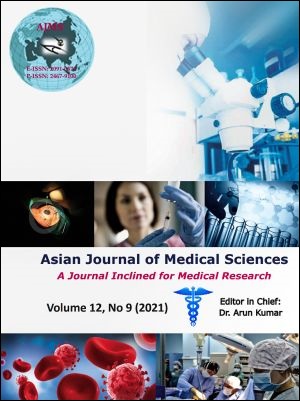The prevalence of mesiodens in orthodontic patients in western region of Nepal
Keywords:
Mesiodens, Nepal, PrevalenceAbstract
Background: Mesiodens are supernumerary teeth present in the midline of the maxilla.
Aims and Objective: The present study was conducted to know the prevalence of mesiodens among children aged 5 to 14 years in Pokhara, Nepal.
Materials and Methods: Data was collected from 1194 orthodontic patients coming to the department of Dentistry, in Manipal Teaching Hospital from 2009 till 2019. The files were reviewed to know the prevalence, demography and the complications associated with the presence of mesiodens.
Results: Our results showed that the prevalence of mesiodens was 2.84% in our population. The prevalence was significantly more among males. Children aged 10-14 years presented more than the children aged 5-10 years. Though, there were complications associated with the presence of mesiodens, none of them were symptomatic.
Conclusions: Mesiodens is the most common form of supernumerary teeth in the pediatric patients which occurs as a result of genetic and environmental factors. Their early diagnosis can reduce the treatment required and therefore prevent development of associated problems in the future.
Downloads
Downloads
Published
How to Cite
Issue
Section
License
Copyright (c) 2021 Asian Journal of Medical Sciences

This work is licensed under a Creative Commons Attribution-NonCommercial 4.0 International License.
Authors who publish with this journal agree to the following terms:
- The journal holds copyright and publishes the work under a Creative Commons CC-BY-NC license that permits use, distribution and reprduction in any medium, provided the original work is properly cited and is not used for commercial purposes. The journal should be recognised as the original publisher of this work.
- Authors are able to enter into separate, additional contractual arrangements for the non-exclusive distribution of the journal's published version of the work (e.g., post it to an institutional repository or publish it in a book), with an acknowledgement of its initial publication in this journal.
- Authors are permitted and encouraged to post their work online (e.g., in institutional repositories or on their website) prior to and during the submission process, as it can lead to productive exchanges, as well as earlier and greater citation of published work (See The Effect of Open Access).




